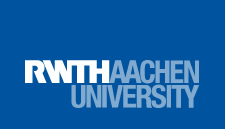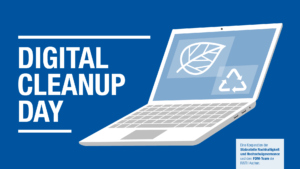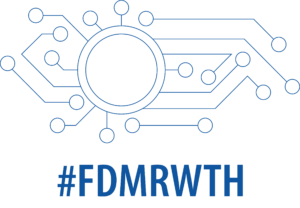On the occasion of Digital Cleanup Day, which takes place every year on the third Saturday in March, the RDM team at RWTH Aachen University has joined forces with the Sustainability and University Governance Office of the Board of Governors office to raise awareness of sustainability in the digital age. With tips, tricks and the RDM handout (German only), digital cleanup is easier and more efficient.
Thoughtful From the Start: How Structured Data Management Helps
If you manage your data in a structured way from the start, you can avoid a lot of clean-up work later on, such as sorting and deleting data that is no longer needed. Since this is not always the case, we have compiled a list of RDM measures that will also help you with the clean-up of your research data after the fact:
1. Data Management Plan
Use a data management plan (DMP) for your research data! A DMP is a document in which you can describe how your data will be handled throughout the entire project. The creation of a DMP is therefore highly recommended and is also increasingly required by many funding agencies. A DMP offers the advantage of transparent storage and backup strategies, thus avoiding the need for additional copies.
A DMP can define
- what data will be collected in a research project
- where it will be stored
- who will have access to it
- how it will be further processed
- how long it will be stored or when it should be deleted
Web applications such as the Research Data Management Organiser (RDMO) support the (collaborative) creation and editing of DMPs.
The tool offers the possibility to choose between different catalog templates in order to focus on the issues required by research sponsors or to highlight project-specific aspects, depending on your needs.
2. Metadata
Metadata provides quick information about the content, context, and structure of the data during the cleanup. This eliminates the need to examine the data itself to determine whether it should be kept.
Anyone who has ever sorted a bookshelf knows how annoying it is when the author’s name and title are not on the spine of the book!
Metadata can be captured in formalized forms (e.g., RDF, JSON-LD), but also in the form of standards and conventions for file and folder names. ReadMe files containing information and descriptions of the data are also helpful.
Further Information
On the website of the Sustainability Office of the RWTH, you can find all information about the Digital Cleanup Day, information about energy consumption and measures to reduce storage at a glance. There you will also find our RDM handout with our RDM measures for cleanup.
If you have any questions about Research Data Management, our RDM team is here to help. Please do not hesitate to contact us – we are here to help!
Responsible for the content of this article is Lina-Louise Kaulbach.






Leave a Reply
You must be logged in to post a comment.